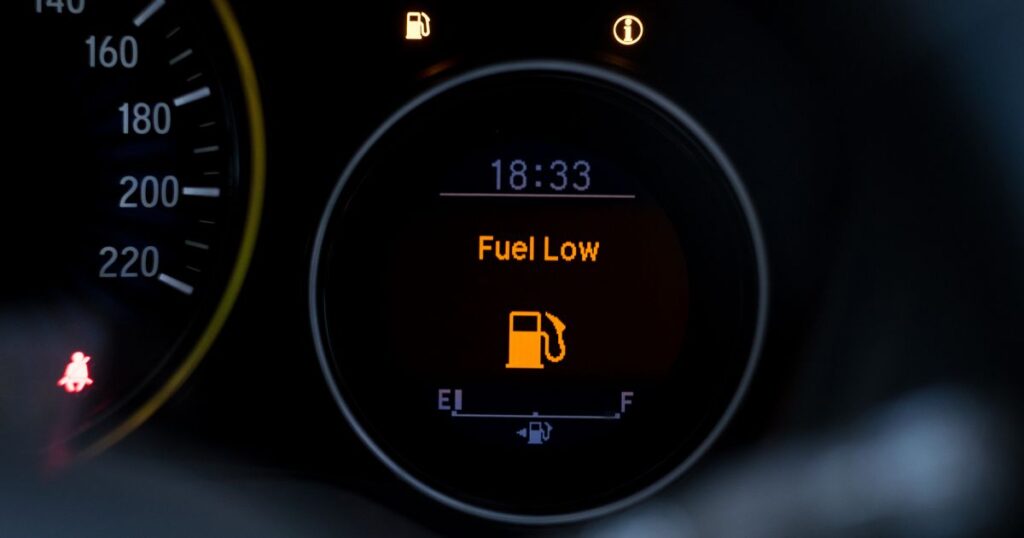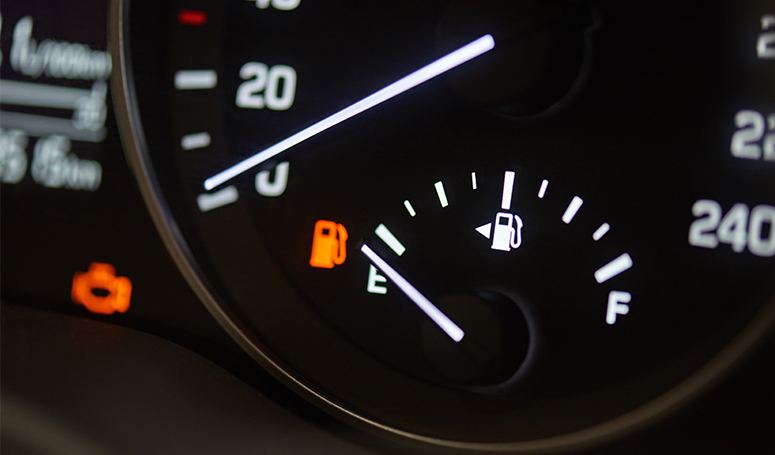The distance a liter of petrol (gasoline) can take a vehicle depends on various factors, including the fuel efficiency of the vehicle, driving conditions, and driving habits. Fuel efficiency is typically measured in terms of miles per gallon (MPG) or kilometers per liter (km/L).
In the United States, fuel efficiency is commonly measured in MPG, and an average car might get around 25-30 miles per gallon. In countries using the metric system, fuel efficiency is often measured in km/L, and an average car might achieve around 10-15 km/L.
Therefore, if we take a rough average of 30 MPG (or about 12.75 km/L), a liter of petrol could take you approximately 12.75 kilometers. Keep in mind that this is a general estimate, and the actual mileage can vary based on the factors mentioned earlier.
How do vehicle-specific factors influence fuel efficiency?

Vehicle-specific factors play a crucial role in determining fuel efficiency. The efficiency of a vehicle in terms of fuel consumption is influenced by various design, engineering, and performance-related aspects. Here are some key vehicle-specific factors that can impact fuel efficiency:
Weight
Heavier vehicles generally require more energy to move, resulting in increased fuel consumption. Lighter vehicles tend to be more fuel-efficient.
Aerodynamics
The shape and design of a vehicle significantly affect its aerodynamic efficiency. Vehicles with streamlined designs experience less air resistance, which can improve fuel efficiency. Features like spoilers and air dams are often incorporated to enhance aerodynamics.
Engine Efficiency
The efficiency of the engine itself is a critical factor. Modern engines with advanced technologies, such as direct injection, turbocharging, and variable valve timing, can optimize fuel combustion and improve fuel efficiency.
Transmission
The type of transmission can impact fuel efficiency. Vehicles with automatic transmissions, continuously variable transmissions (CVTs), or advanced manual transmissions may have different fuel efficiency characteristics.
Tire Design and Pressure
The type of tires and their inflation pressure can affect rolling resistance. Low rolling resistance tires and proper tire inflation contribute to better fuel efficiency.
Drive System
The choice of drivetrain, whether a vehicle is front-wheel drive, rear-wheel drive, or all-wheel drive, can influence fuel efficiency. All-wheel drive systems generally result in lower fuel efficiency due to the additional mechanical components and increased weight.
Vehicle Size and Type
Smaller vehicles tend to be more fuel-efficient than larger ones. The type of vehicle, such as a sedan, SUV, or truck, also plays a role. Generally, smaller and more aerodynamic vehicles have better fuel efficiency.
Regenerative Braking
Hybrid and electric vehicles often use regenerative braking systems to capture and store energy during braking, which can enhance overall fuel efficiency.
Idle Fuel Consumption
The fuel efficiency of a vehicle is impacted by its idle fuel consumption rate. Technologies like start-stop systems can help reduce fuel consumption during idling.
Maintenance
Regular maintenance, including oil changes, air filter replacements, and engine tune-ups, is crucial for maintaining optimal fuel efficiency. Well-maintained vehicles operate more efficiently.
Driving Behavior
While not a vehicle-specific factor, the way a vehicle is driven can significantly influence fuel efficiency. Aggressive driving, excessive speeding, and frequent acceleration and braking can lead to increased fuel consumption.
Considering these factors and choosing a vehicle that aligns with your specific needs and usage patterns can help you maximize fuel efficiency and reduce overall fuel consumption. Additionally, adopting eco-friendly driving habits can further contribute to fuel savings.
What are the measurement units for fuel efficiency?
Fuel efficiency is commonly measured using various units depending on the region. The two primary systems are the metric system, which is used in most countries worldwide, and the imperial system, which is used in the United States, the United Kingdom, and a few other countries. Here are the main units for measuring fuel efficiency in both systems:
Metric System
Liters per 100 Kilometers (L/100 km)
This unit represents the amount of fuel (in liters) required to travel a distance of 100 kilometers. Lower values indicate higher fuel efficiency.
Kilometers per Liter (km/L)
This unit represents the distance (in kilometers) a vehicle can travel on one liter of fuel. Higher values indicate higher fuel efficiency.
Liters per 10 Kilometers (L/10 km)
Similar to liters per 100 kilometers, this unit provides a more granular measurement by representing the amount of fuel required to travel 10 kilometers.
Imperial System
Miles per Gallon (mpg)
This unit represents the number of miles a vehicle can travel on one gallon of fuel.
Higher values indicate higher fuel efficiency.
Gallons per 100 Miles (gal/100 mi)
This unit represents the amount of fuel (in gallons) required to travel a distance of 100 miles.
Lower values indicate higher fuel efficiency.
Miles per Imperial Gallon (mpg (Imp.))
Similar to miles per gallon, this unit is used in the UK and some other countries that use the imperial gallon.
How does fuel efficiency vary among different types of vehicles?

Fuel efficiency can vary significantly among different types of vehicles due to variations in design, size, weight, and intended use. Here’s an overview of how fuel efficiency typically differs across various vehicle types:
Compact Cars
Compact cars are generally known for better fuel efficiency. Their smaller size and lighter weight contribute to reduced fuel consumption. Many compact cars feature fuel-efficient engines and aerodynamic designs.
Sedans
Midsize and full-size sedans vary in fuel efficiency, but they often offer a good balance between space and fuel economy.
Advances in technology, such as turbocharging and direct injection, have improved fuel efficiency in many sedans.
SUVs (Sport Utility Vehicles)
SUVs typically consume more fuel than smaller cars due to their larger size, increased weight, and often less aerodynamic designs.
However, there is a growing market for compact and crossover SUVs that prioritize fuel efficiency.
Crossovers
Crossover vehicles aim to combine the versatility of an SUV with the fuel efficiency of a smaller car. They often have a unibody construction similar to cars. Compact crossovers tend to be more fuel-efficient compared to larger SUVs.
Trucks
Trucks, especially full-size pickups, are known for their lower fuel efficiency compared to smaller vehicles.
Advances in technology, such as the use of lighter materials and more efficient engines, have led to improvements in fuel efficiency in some truck models.
Hybrid Vehicles
Hybrid vehicles use a combination of an internal combustion engine and an electric motor to improve fuel efficiency.
Hybrid technology is commonly found in various vehicle types, including sedans, SUVs, and even trucks.
Electric Vehicles (EVs)
Electric vehicles are the most energy-efficient, as they use electric motors powered by batteries.
EVs have zero tailpipe emissions and can be highly efficient in terms of converting electrical energy to motion.
Plug-in Hybrid Vehicles (PHEVs)
PHEVs combine an internal combustion engine with a battery that can be charged from an external power source.
PHEVs offer the flexibility of driving on electric power for short distances and using the internal combustion engine for longer trips.
Performance Cars
High-performance vehicles, such as sports cars and luxury cars, often prioritize power and speed over fuel efficiency.
However, advancements in engineering may still lead to improved efficiency in some performance models.
FAQ’s
How much can we travel in 1 Liter petrol?
The distance a vehicle can travel on 1 liter of petrol depends on its fuel efficiency, typically measured in kilometers per liter (km/L).
How much distance is covered in 1 Liter of petrol?
The distance covered by 1 liter of petrol is determined by the vehicle’s fuel efficiency, expressed in terms of kilometers per liter (km/L).
Is 12 km per liter good?
A fuel efficiency of 12 km per liter is considered decent and falls within the average range for many vehicles, but what is considered “good” can vary based on individual preferences and regional standards.
Can a car travel 240 km on 15 Liters of petrol?
To determine if a car can travel 240 km on 15 liters of petrol, you would divide the total distance by the fuel efficiency. For example, if the car gets 12 km/L, it can cover 240 km (15 liters x 12 km/L).
How much petrol is used in 1 km?
The amount of petrol used per kilometer is the reciprocal of fuel efficiency, so if a car gets 12 km per liter, it uses 1/12th of a liter for each kilometer traveled.
How much petrol is needed for 300 km?
The amount of petrol needed for a 300 km journey depends on the vehicle’s fuel efficiency. For a car getting 12 km/L, it would require 25 liters (300 km / 12 km/L).
Final Words
Figuring out how far you can go with a liter of petrol depends on your car, how you drive, and how good it is on fuel. We talked about things like how engines work and different types of cars. We also looked at ways to measure fuel efficiency, like miles per gallon or kilometers per liter.
By taking good care of our cars, using fuel-efficient technologies, and driving smart, we can use less fuel. This is good for the environment and saves money. So, it’s important to think about how we use fuel and try to use it wisely.

